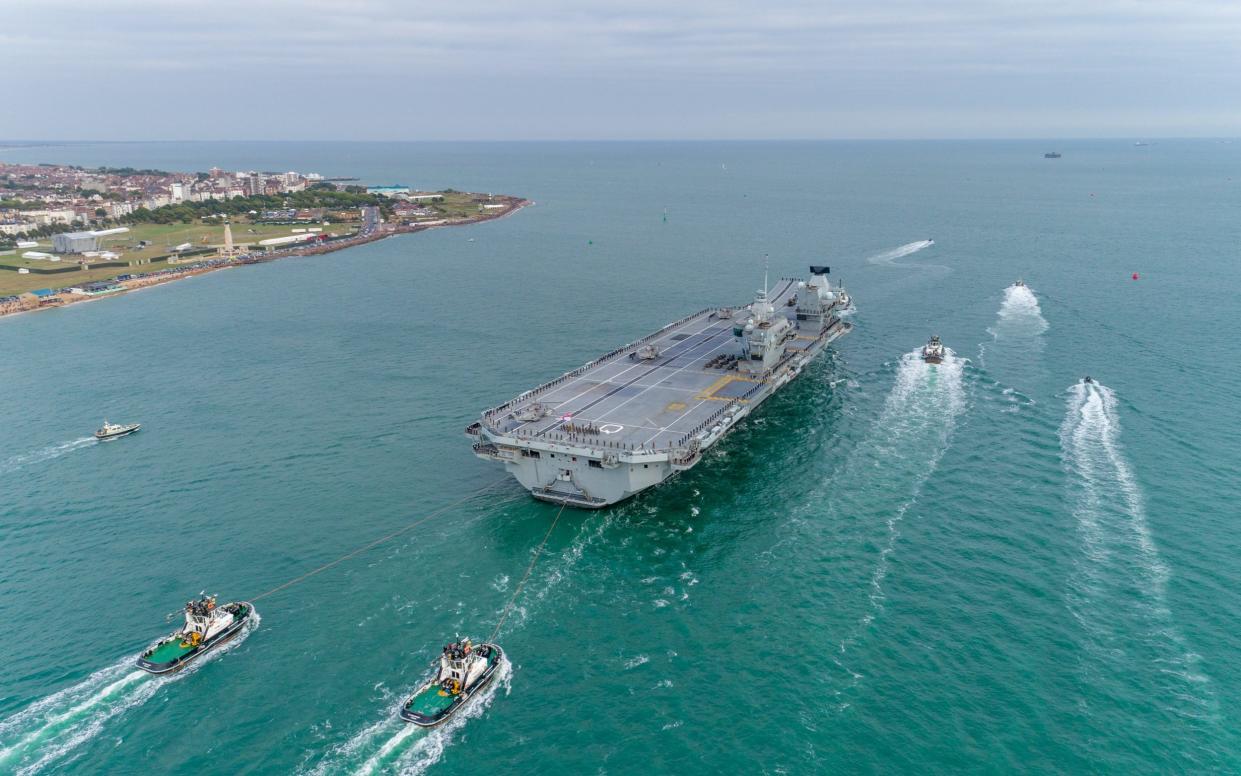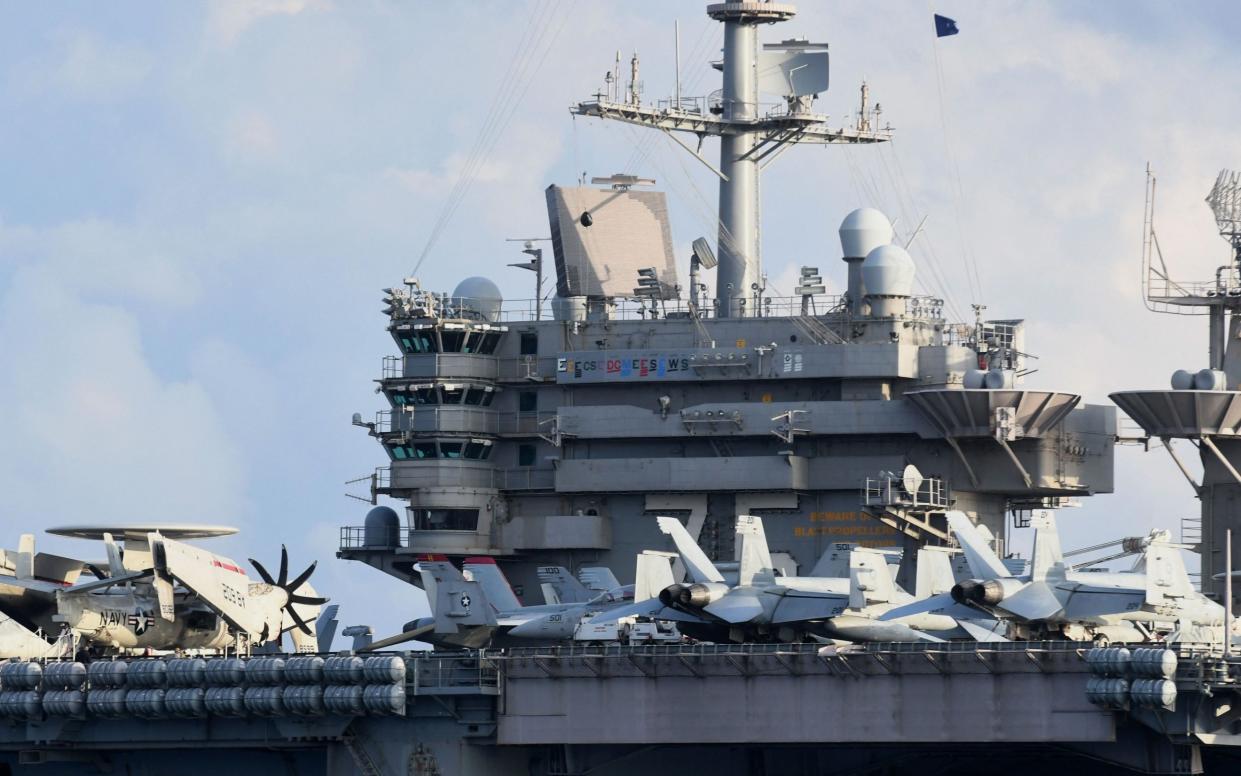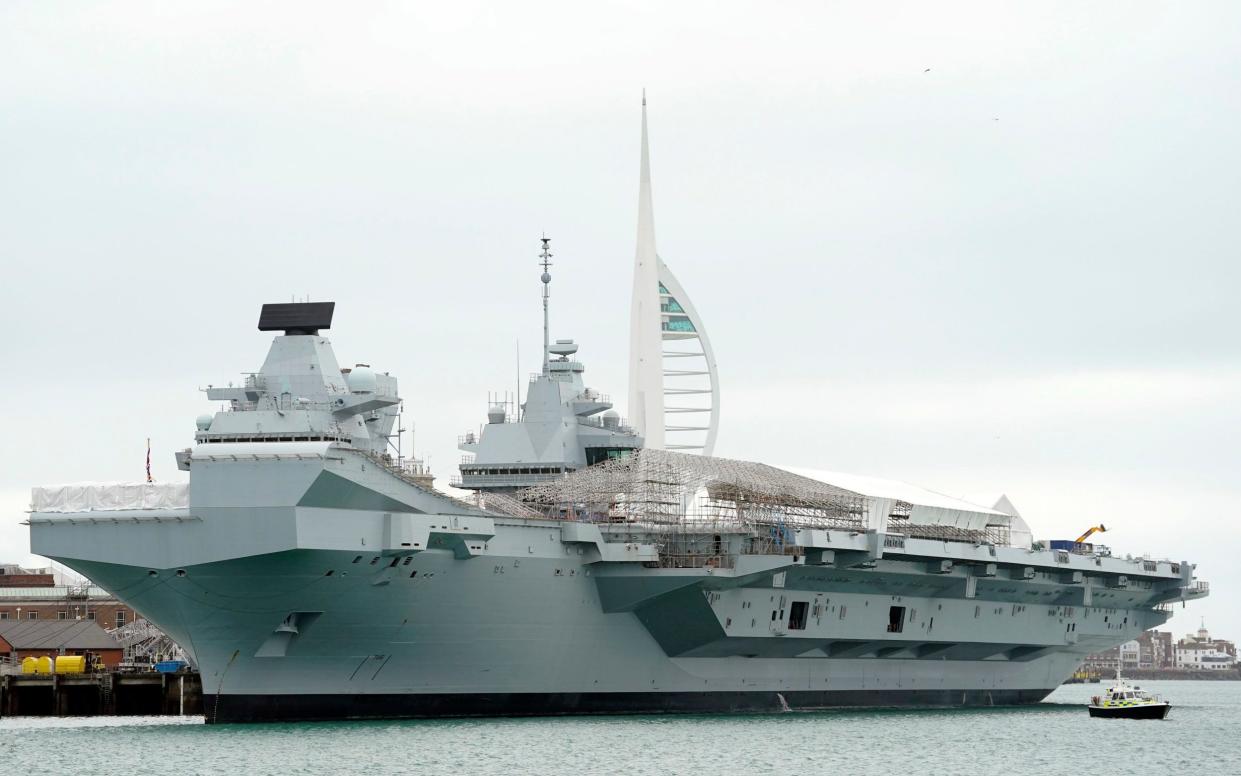What’s gone wrong with Britain’s aircraft carriers? A timeline of unfortunate incidents

On Friday night, divers carried out an underwater inspection on HMS Queen Elizabeth, one of the Royal Navy’s two aircraft carriers. They discovered corrosion on a shaft coupling and this means the ship will need to be repaired in dry dock. The Navy is now scrambling to get her sister ship, HMS Prince of Wales, ready in order to take Queen Elizabeth’s place on a major Nato exercise. This setback is the latest in a long struggle over the last quarter-of-a-century in which the Royal Navy has sought to establish the Queen Elizabeth-class ships as a fully capable means of power projection from the sea.
The story of the carriers begins back in 1998 with the Strategic Defence Review, which first set out the government’s ambition to replace the small Invincible-class carriers which were then in service with bigger vessels.
Almost a decade of debate over the new carriers’ size and design then took place. One very important point was the decision as to what aircraft the ships would carry, which would, in turn, affect their design and equipment.
In the Western world, there are essentially two systems for launching fighter jets or other aeroplanes off a carrier and then recovering them back aboard ship later. The first system, as used by the US and French navies, is to use catapults to launch the planes. The catapult rapidly accelerates the aircraft to flying speed, meaning that it doesn’t need a runway. To land back aboard the ship the plane lowers its tail hook, which catches an arrester wire laid across the deck. The wire drags the plane to a halt, so that it doesn’t run off the ship. This system is known as Catapult Take-Off, Barrier Arrested Recovery (Catobar).
The other method, employed by various nations including Japan, Italy, Spain and Britain, is to use so-called “jump jets”, fighter jets equipped with vertical thrust equipment. The famous Harrier, now long-retired from British service, is of this type. So is the B version of the F-35 Lightning II.
A jump jet can get airborne after a short unassisted run and benefits from doing this up a “ski jump” ramp. It can lift off vertically, but it can’t carry much if it does this, so a so-called rolling take-off using a ramp is standard practice.
When a jump jet returns to the ship it will have burned fuel and released its weapons, so it will be light enough to come down vertically. This is referred to as Short Take-Off, Vertical Landing (STOVL).
The problem with STOVL jets is that their heavy, bulky vertical thrust equipment means they cannot carry as much fuel and weaponry as a Catobar tailhook plane: they have less range and combat power. Jump jets are also much more expensive, both to buy and to fly.
It was decided that the Royal Navy’s new ships would initially be equipped with the F-35B operating in STOVL mode. However, back in the 2000s it was not regarded as a certainty that the F-35B would work. It was also expected that the carriers would stay in service for as long as 50 years and might need replacement aircraft – and there might not be any STOVL planes then available.
Thus the carriers were designed so that it would be possible to add catapults to them at any point in their lives. “Great care has been taken to ensure that [the carriers] could be adapted for conventional carrier aircraft,” said Aircraft Carrier Alliance, the partnership set up to handle the building work. “Each ship can be altered later in its service life to accommodate catapults and arrester gear.”
The contracts to build the carriers were finally signed in 2008, during Gordon Brown’s tenure as prime minister. Later governments, which several times considered axing the ships, found the contracts to be inescapable. It did not go unnoticed that one of the yards building the ships was next to Brown’s constituency.
The cost of the ships eventually rose to £6.2 billion. This is not one of the Ministry of Defence’s (MoD) more expensive projects – the RAF’s Typhoon land-based fighters, for instance, cost more than £23 billion and its Voyager tankers more than £10 billion. Nonetheless, it is firmly believed by many that it is the carriers that lie behind the MoD’s financial woes.
The next significant development for the Queen Elizabeth-class was the Strategic Defence Review of 2010, in which it was decided that the government would exercise its option to fit at least one carrier with catapults and arrester wires – “cats and traps”. This would involve some cost, but switching from F-35B jump jets to F-35C tailhook planes would naturally mean a saving – and they would also be better warplanes.

Indeed, the scope for savings was greater still. As soon as the catapult plan was announced, speculation began that the UK might not wait for F-35Cs. Instead, it seemed likely that we would start with the F/A-18 Hornet, as seen in Top Gun: Maverick, still the mainstay jet of the mighty US Navy and very affordable.
But there were those who disliked the catapult plan nonetheless. The ridiculous suggestion was leaked to the press that it would cost £2 billion to fit cats and traps to one ship, and that this would wipe out the savings from cheaper and better aircraft.

This suggestion was later backed up by some extremely dubious figures concocted in secrecy by a group of 13 senior MoD mandarins who somehow failed even to consider the existence of the F-18 Hornet. It was duly decided in 2012 to revert to the STOVL plan involving the F-35B, which has resulted in the present situation where the Navy doesn’t have anything like enough aircraft.
In 2021, with great fanfare, HMS Queen Elizabeth set off around the world on her maiden operational deployment. There were just eight F-35B jets to put aboard a ship designed to carry 36. Another 10, with crews, were borrowed from America, but the ship was still half empty. Xi Jinping probably wasn’t very impressed.
Things didn’t improve. In 2022, the second carrier, HMS Prince of Wales, suffered a major drive shaft failure and had to spend nine months in dry dock. There still were not anything like enough aircraft: jets were aboard ship on just 18 days – 5 per cent of the time – in 2022.

Last year, the Queen Elizabeth made another “deployment” – a show-the-flag cruise in safe northern waters. Again, just eight jets could be found. The Navy’s sole solid-stores ship, RFA Fort Victoria, was unavailable. It was an even less credible deployment than in 2021.
And now the Queen Elizabeth in her turn has drive shaft problems. These will be fixed eventually, but we still won’t have enough jets. The Royal Navy has admitted that it would like one day to fit the ships for Catobar, which would allow them to have proper, powerful air groups at greatly reduced cost: but it won’t happen soon. The story of our aircraft carriers has been a sorry saga, and looks likely to carry on that way for some time.


